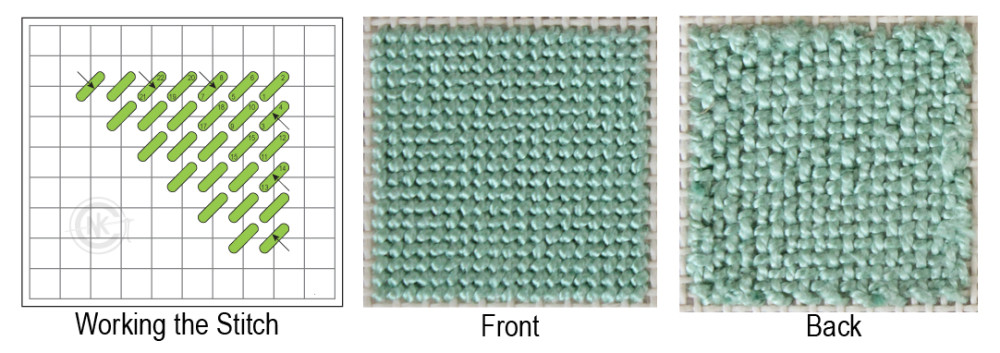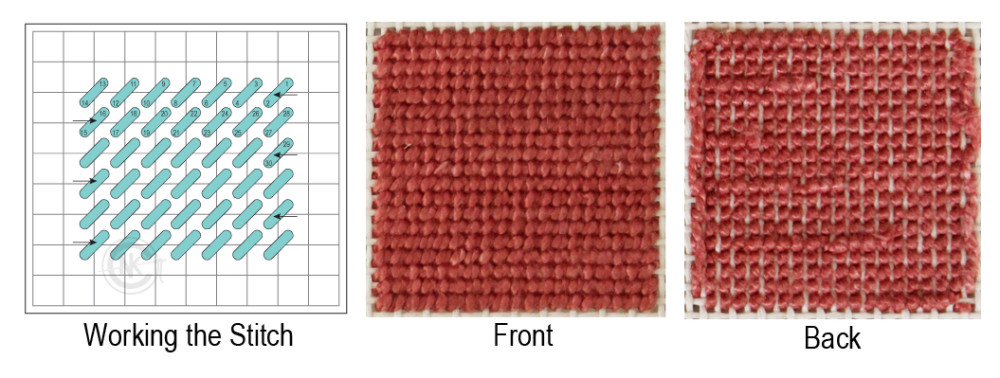Basic Needlepoint Stitches – Tent Stitch
Tent stitch is a common stitch used in nearly any type of needlepoint. These stitches are produced when a single stitch is worked diagonally over a single intersection of the canvas. There are three types, and each has a different use and degree of coverage. The three types of tent stitch are Basketweave Stitch, Half Cross Stitch and Continental Stitch, and while the stitches may look the same on the surface, they are worked differently, and have their own pros and cons.
Basketweave Stitch
The most popular stitch for filling a large area of the canvas is the Basketweave Stitch. This stitch has the requisite diagonal stitch on the front of the canvas, but has vertical and horizontal stitches on the reverse (back) side of the canvas.

The main benefit to working basketweave over the other types of tent stitches are that there is no distortion – the vertical and horizontal stitches on the back side effectively cancel out the diagonal stitches on the front side, so there’s no pulling of the canvas, causing the distortion. Basketweave also has very good thread coverage.
Half Cross Stitch
This is the same stitch used in cross stitch embroidery, and also forms a tidy vertical stitch on the front side of the work – but can severely distort the canvas. At times the warping is so severe that blocking won’t help – the straightened piece will eventually work itself back into its warped shape.

While working this stitch may seem more economical than the other two because it requires less thread, it has very poor thread coverage. This leaves you with the possibility of seeing woven ends and tails right through the front side of the work. This stitch should only be used as a last resort, when basketweave or continental stitches are not practical for filling an area.
Continental Stitch
This stitch is also popular with stitchers for working straight lines, because the stitch is worked in vertical or horizontal rows and also has good thread coverage.

The drawback of using Continental tent stitch is that while there are nice, tidy diagonal stitches on the front side, there are longer diagonal stitches on the back, which cause distortion. Because of this, use the continental stitch for narrow lines or bands and borders, or to fill small areas where basketweave is not practical.
In addition to these three basics stitches, there are also variations of the tent stitch. You can find these on the Needlepoint Stitches Page.
Facebook Conversations